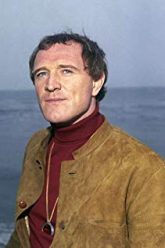Overview
| Born | in Limerick, Ireland |
| Died | in Bloomsbury, London, England, UK (Hodgkin’s disease) |
| Birth Name | Richard St. John Harris |
| Height | 6′ (1,83 m) |
Mini Bio
Richard St John Harris was born on October 1, 1930 in Limerick, Ireland, to a farming family, one of nine children born to Mildred Josephine (nee Harty) and Ivan John Harris. He attended Crescent College, a Jesuit school, and was an excellent rugby player, with a strong passion for literature. Unfortunately, a bout of tuberculosis as a teenager ended his aspirations to a rugby career, but he became fascinated with the theater and skipped a local dance one night to attend a performance of “Henry IV”. He was hooked and went on to learn his craft at the London Academy of Music and Dramatic Art (LAMDA), then spent several years in stage productions. He debuted on screen in L’épopée dans l’ombre (1959) and quickly scored regular work in films, including Cargaison dangereuse (1959), Les combattants de la nuit (1960) and a good role as a frustrated Australian bomber pilot in Les canons de Navarone (1961).
However, his breakthrough performance was as the quintessential “angry young man” in the sensational drama Le prix d’un homme (1963), which scored him an Oscar nomination. He then appeared in the WW II commando tale Les héros de Télémark (1965) and in the Sam Peckinpah-directed western Major Dundee (1965). He next showed up in Hawaï (1966) and played King Arthur in Camelot (1967), a lackluster adaptation of the famous Broadway play. Better performances followed, among them a role as a reluctant police informer in Traître sur commande (1970) alongside Sir Sean Connery. Harris took the lead role in the violent western Un homme nommé Cheval (1970), which became something of a cult film and spawned two sequels. As the 1970s progressed, Harris continued to appear regularly on screen; however, the quality of the scripts varied from above average to woeful.
His credits during this period included directing himself as an aging soccer player in Bloomfield (1970); the western Le shérif ne pardonne pas (1973); the big-budget “disaster” film Terreur sur le Britannic (1974); the strangely-titled crime film Refroidi à 99% (1974); with Connery again in La rose et la flèche (1976); Gulliver’s Travels (1977); a part in the Les dents de la mer (1975); Orca (1977) and a nice turn as an ill-fated mercenary with Richard Burton and Roger Moore in the popular action film Les oies sauvages (1978).
The 1980s kicked off with Harris appearing in the silly Bo Derek vanity production Tarzan l’homme singe (1981) and the remainder of the decade had him appearing in some very forgettable productions. However, the luck of the Irish was once again to shine on Harris’s career and he scored rave reviews (and another Oscar nomination) for The Field (1990). He then locked horns with Harrison Ford as an IRA sympathizer in Jeux de guerre (1992) and got one of his best roles as gunfighter English Bob in the Clint Eastwood western Impitoyable (1992). Harris was firmly back in vogue and rewarded his fans with more wonderful performances in Deux drôles d’oiseaux (1993); Pleure ô pays bien-aimé (1995); The Great Kandinsky (1995) and This Is the Sea (1997). Further fortune came his way with a strong performance in the blockbuster Gladiator (2000) and he became known to an entirely new generation of film fans as Albus Dumbledore in the mega-successful Harry Potter à l’école des sorciers (2001) and Harry Potter et la chambre des secrets (2002). His final screen role was as “Lucius Sulla” in Jules César (2002).
Harris died of Hodgkin’s disease, also known as Hodgkin’s lymphoma, in London on October 25, 2002, aged 72.













